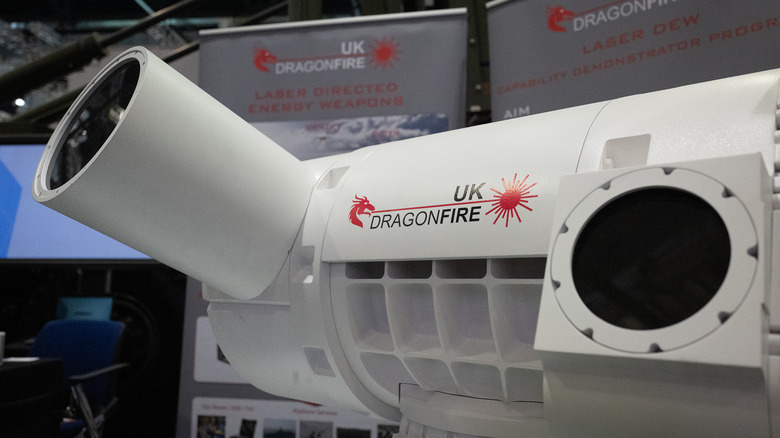Directed Energy Weapons Explained: What Are They And How Do They Work?
Directed energy might be a foreign concept for many casual viewers of military technology. Watching footage on the news often showcases the destructive might of explosive munitions, monstrously large machine guns, and vehicular technology that dominates the theater of battle (whether in the air, on land, or at sea). But directed energy weapons are equally important in the U.S. military's arsenal and often underappreciated by the uninitiated. Simply put, directed energy weapons are those that employ lasers, microwaves, and other technologies to offer a potent defensive solution in the field. Directed energy weapons help keep soldiers, sailors, and aircrews safe. Northrup Grumman, Lockheed Martin, and many other defense contractors have been developing increasingly more sophisticated tools in this arena for five decades.
One of the more prominent historical examples of this defensive toolbox came from Ronald Reagan's ill-fated "Star Wars" Program. Officially dubbed the Strategic Defense Initiative (SDI) and unveiled in March 1983, the program's mission was to create a space-based defensive network that could shield the United States from long-range missile attacks. Utilizing physical projectiles, laser devices, and other shielding technologies, the team behind the initiative worked to create an effective means of intercepting long-range missiles before they entered U.S. airspace. Ultimately, the project garnered an extreme volume of criticism and fizzled out. However, the germ of an idea here has led to new projects like the Navy's directed energy tools and even Israel's Iron Dome rocket defense system.
How the U.S. military deploys directed energy weapons
The Office of Naval Research notes that directed energy weapons (DEWs) are deployed for the express purpose of focusing "the radiated energy reliably and repeatedly at range, with precision and controllable effects, while producing measured physical damage and/or mission defeat." These tools are utilized in two primary combat roles. High Power Microwaves (HPMs) are unleashed on electronic systems within enemy infrastructure and equipment in an effort to destroy or disrupt key resource functionality. For instance, the EA-18G Growler is an aircraft that's flown in large part to undertake electronic attack missions focused on combatant radar systems. Success here makes the skies safer for friendly fighter jets and bombers.
High Energy Lasers (HELs) offer a similar defensive platform but may focus more on destroying specialized attack equipment like unmanned drones, missiles, and even mortars. HEL systems fire a concentrated laser at incoming threats to disable or destroy them directly. These systems (both HELs and HPMs) can be mounted on ground vehicles, aircraft, and naval vessels for improved defensive capabilities across a broad spectrum of engagements with enemy forces. In all landscapes, however, the purpose of DEW technology is to improve battlefield supremacy and bolster mission success by providing friendly forces with a more hospitable and controlled operational theater.
Low cost, weight, and size
Perhaps the most important feature of directed energy weapons is the small footprint that they command. In cost, size, weight, and power required to operate the systems, DEWs offer a massive improvement in efficiency over conventional interception systems. One consideration for the SDI of the '80s, for instance, was to use a barrage of projectiles to create a midair collision with incoming missile threats. The idea was that interception would spark detonation or a course change, rendering the enemy's target unharmed. However, this requires the upkeep of bulky and expensive missile systems as well, and targeting rapidly paced ICBMs remains something of a challenge, even to this day.
DEW systems, on the other hand, make use of non-physical projectiles that don't require the same complexities when it comes to precision targeting. As well, directed energy weapons are far smaller in stature than the enormous missile technology used to launch the weapons, not to mention the payload itself. DEWs are smaller and weigh less, and are therefore easier to carry on any vessel and cheaper to operate. This gives the U.S. military a significant edge when it comes to defensive capability. Across service branches, the use of DEW technologies has massively improved the outcomes that soldiers see on the battlefield, and further research will continue to infuse the weapon set with improvements.


